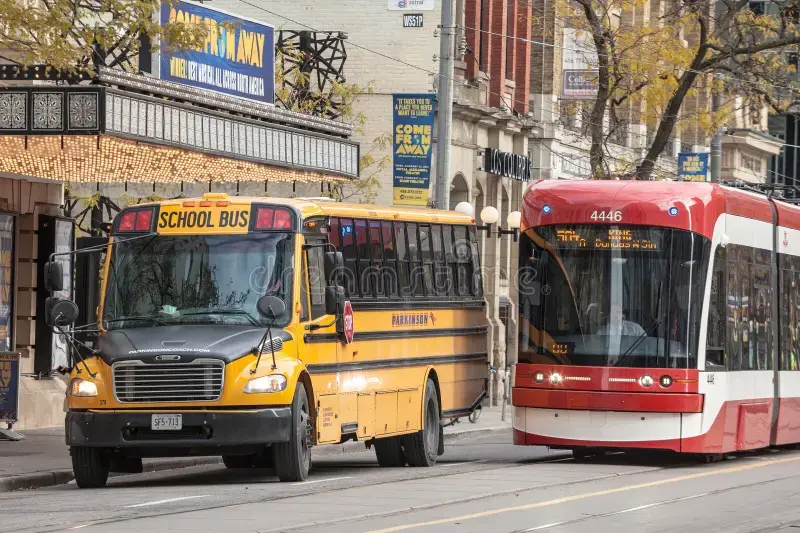Drivers must take into account a number of factors and obligations when passing streetcars. In urban areas, streetcars are often a part of the transportation system.
They share roads with other vehicles and this creates situations in which passing safely is crucial.
This exploration will focus on the issues and challenges associated with safely passing streetcars. We’ll emphasize the need for caution and adherence to the traffic laws, as well as an understanding of how these vehicles operate.
Recognizing Passing streetcars routes and stops
It is important that drivers are aware of the streetcar stops and routes in their area before attempting to overtake a streetcar. The streetcars have predetermined routes and designated stops that may even be located in the middle the road. Knowing these stops will help drivers to anticipate streetcars and avoid sudden movements when they stop.
Giving Way to Passengers Exiting or Boarding
Passing a streetcar with passengers is a major consideration. Drivers must be patient and cautious when streetcars are picking up or dropping off passengers. It is important that drivers yield to streetcars when they stop to board or unload passengers. They should also wait for the streetcar to resume its route before trying to pass.
Traffic Signals and Signs
Signs and traffic signals play an important role in ensuring safe streetcar navigation. The signals that indicate when passing is allowed or not should be closely observed by drivers. Signage may be used in some places to inform drivers about the specific rules for passing streetcars. Ignoring these signals could lead to serious situations or violations.
Understanding no-passing zones
Some sections of roads may be marked as “no-passing” zones. This is especially true in places with high streetcar traffic. The zones were created to protect all road users including streetcar passengers. These regulations require drivers to adhere and refrain from passing the streetcars even when it is convenient.
How to maintain a safe following distance
It is important to maintain a safe distance when following a streetcar for several reasons. It is important to leave enough space behind streetcars because they stop frequently. This allows the driver to respond to any sudden changes to their movement. This also allows for a good line of vision, both for the driver and any other cars. It reduces the chance of a collision or sudden stop when the passengers board or debark.
Road width and traffic conditions
It is important to assess the road conditions and width of the roadway before passing a streetcar. Passing a streetcar on narrow roads may not be possible or safe. Drivers should wait until the right opportunity presents itself. It is also important to assess traffic conditions, because passing a streetcar through heavy traffic can cause congestion.
Indicate Intent To Pass
When passing a streetcar, communication is essential. The driver should signal their intent to pass using their turn signal. This will send a clear message to all road users including the operator of the streetcar. It will help to promote smoother traffic flow and reduce surprises, both for drivers and streetcar passengers.
Streetcars Passing at Specific Locations
There may be designated zones for passing streetcars in certain areas. The zones have been strategically designed to enable drivers to safely pass streetcars. These zones are designated to allow drivers to safely pass streetcars.

Avoiding Sudden Movements
A streetcar must be passed with care and consideration. Rapid movements such as lane changing or abrupt acceleration can lead to dangerous situations. The drivers should be patient and carefully plan all maneuvers, considering the speed of streetcars and their trajectory. This method reduces accidents, and improves traffic flow.
Speed Limit
It is important to adhere to the speed limit when driving. This becomes even more critical if you are passing streetcars. Speeding up can decrease reaction time, increasing the risk of a collision. The respect for posted speed limits is not only beneficial to safety, but it also promotes a harmonious and efficient coexistence of streetcars with other vehicles.
Anticipating Streetcar Movements
The streetcars move in a unique way, with stops and starts occurring at specific locations. The drivers should adjust to these movements by anticipating them and adjusting their driving. Be prepared to make sudden stops in the event of a streetcar picking up passengers or dropping them off. Predicting streetcar movement contributes to road safety, and allows drivers to make better decisions.
Weather Adaptation
The weather conditions are important for the safe passage of streetcars. Weather conditions such as snow or rain can affect visibility and road traction. Drivers should be extra cautious, slow down, and keep a larger following distance when passing streetcars in such weather conditions. It is important to adapt the weather for everyone’s safety.
Understanding Streetcar Blind Spots
As with any other large vehicle, drivers must be aware of blind spots when passing streetcars. Operators of streetcars may not have a good view, particularly on the side and back. Before passing, drivers should not linger in blind spots.
Summary: Streetcars and Street Navigation
Streetcars require a mixture of patience, awareness and adhering to the traffic laws. It is important to respect the operational characteristics of these vehicles, and recognize the challenges they pose. This will improve the efficiency and safety of the roadways. Understanding the guidelines, and being cautious, will help drivers navigate around streetcars, ensuring safety and harmony for everyone on the road.
